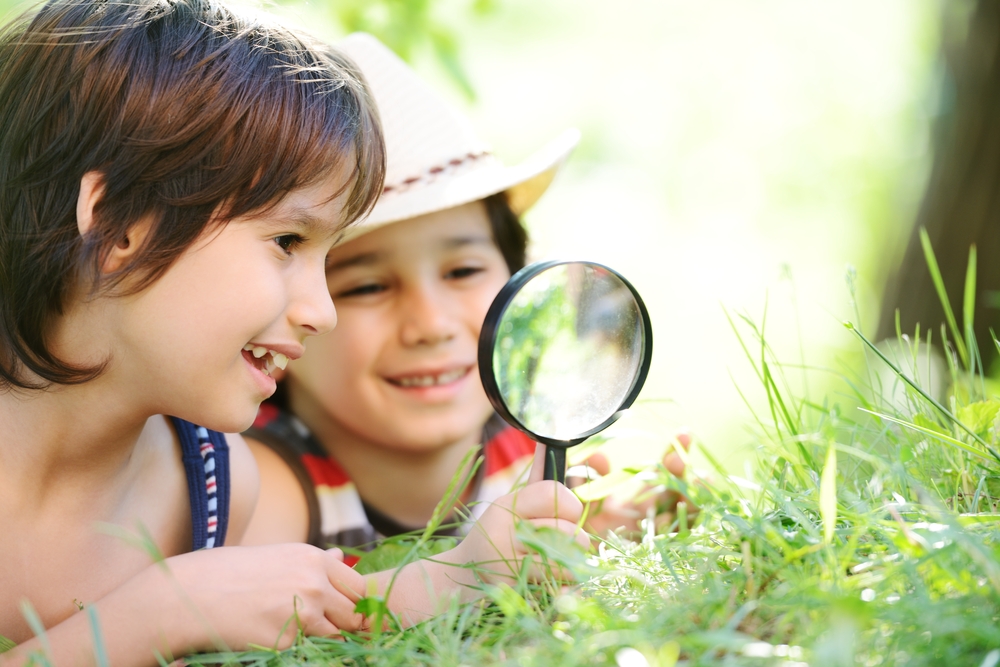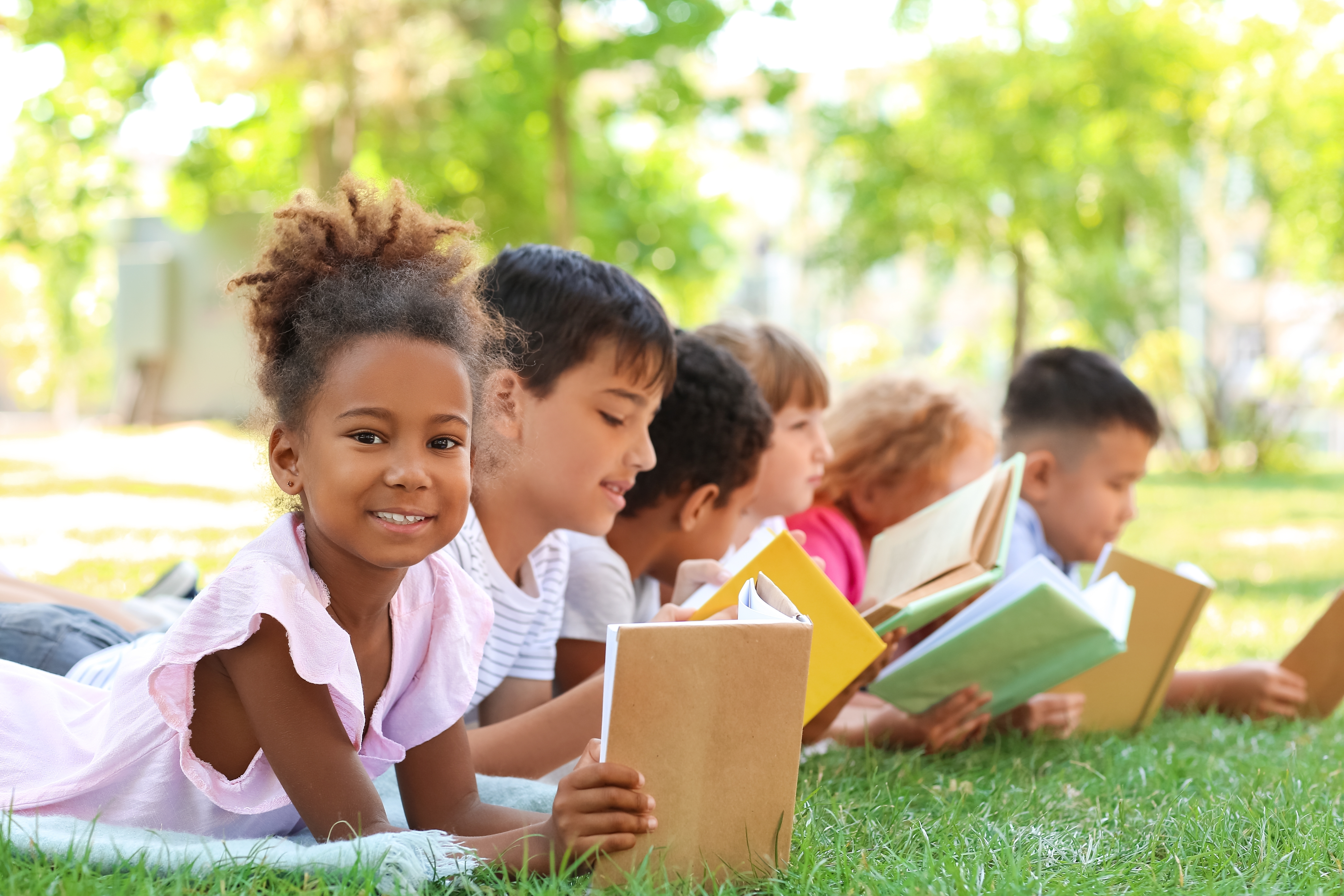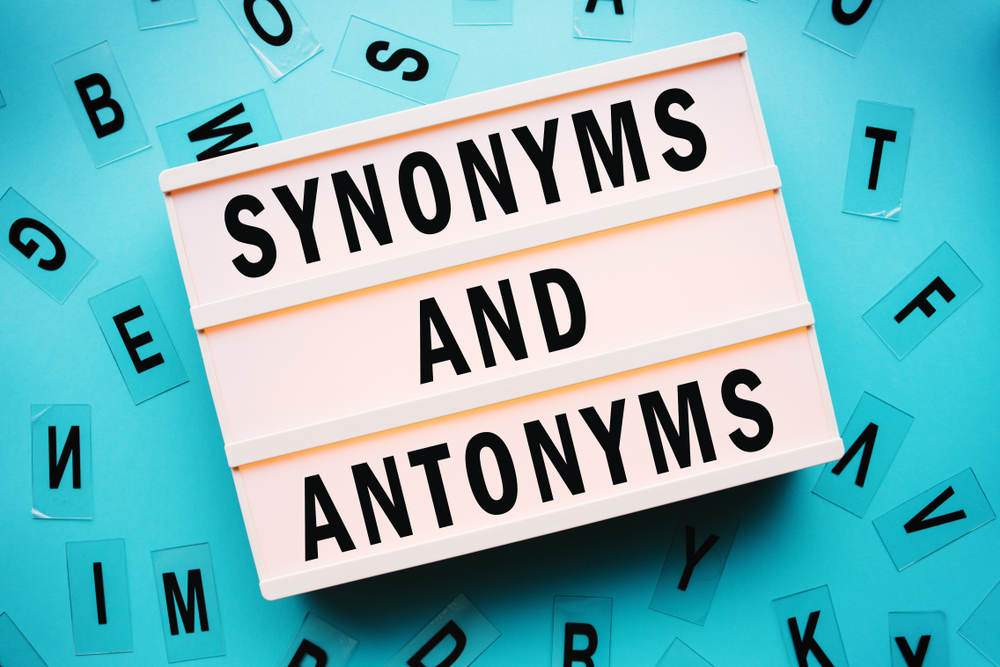Reading Fiction Worksheets for Ages 3-9
161 filtered results
-
From - To
Explore our engaging Reading Fiction Worksheets tailored for children aged 3-9! Our collection encourages young readers to dive into the world of imagination and storytelling. Featuring vibrant illustrations and age-appropriate activities, these worksheets foster essential reading skills, enhance vocabulary, and boost comprehension. Designed for in-home learning or classroom use, these resources make reading fun and interactive. Whether your child is a beginner or a more advanced reader, our worksheets provide a range of activities that cater to different skill levels. Start your child's reading journey today and ignite their passion for stories with our thoughtfully crafted materials!
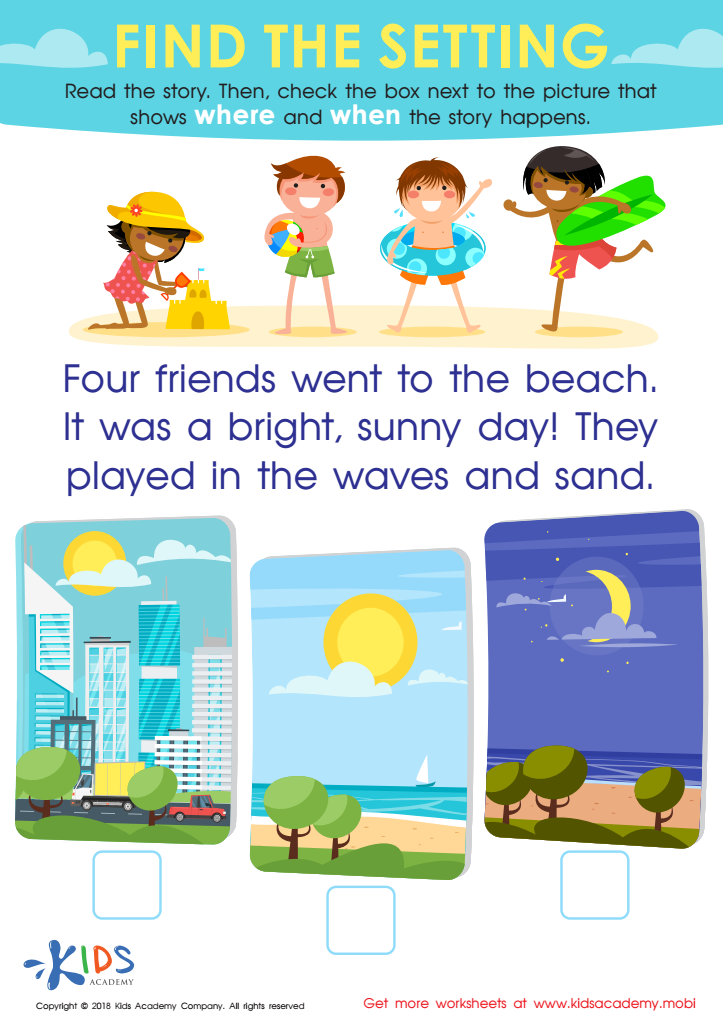

Find the Setting Worksheet
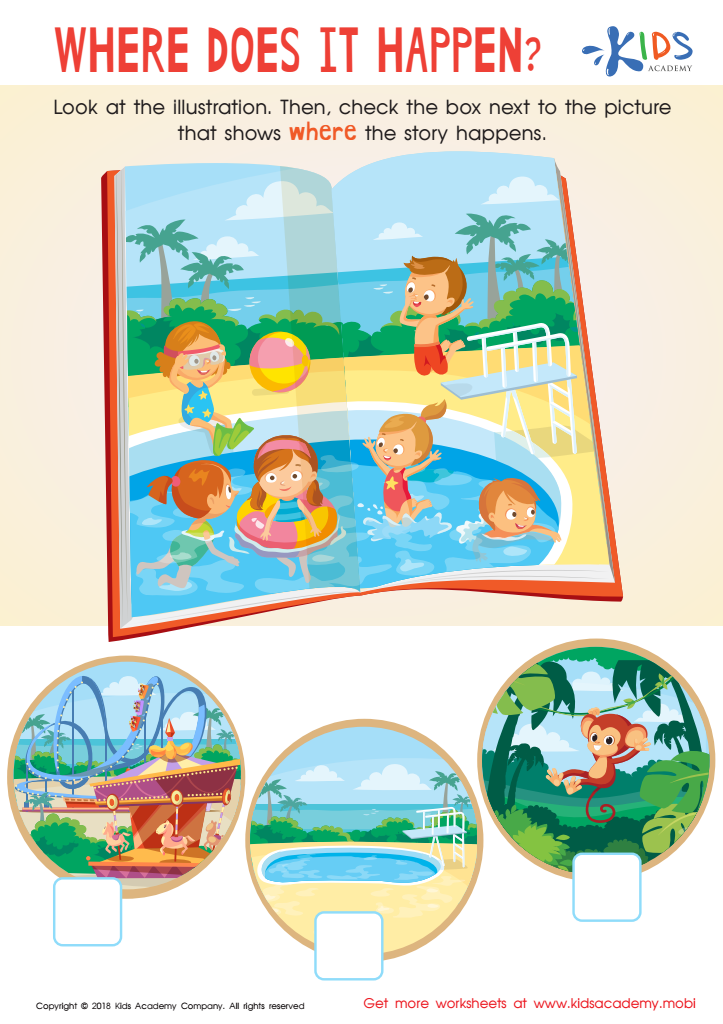

Where Does It Happen? Worksheet
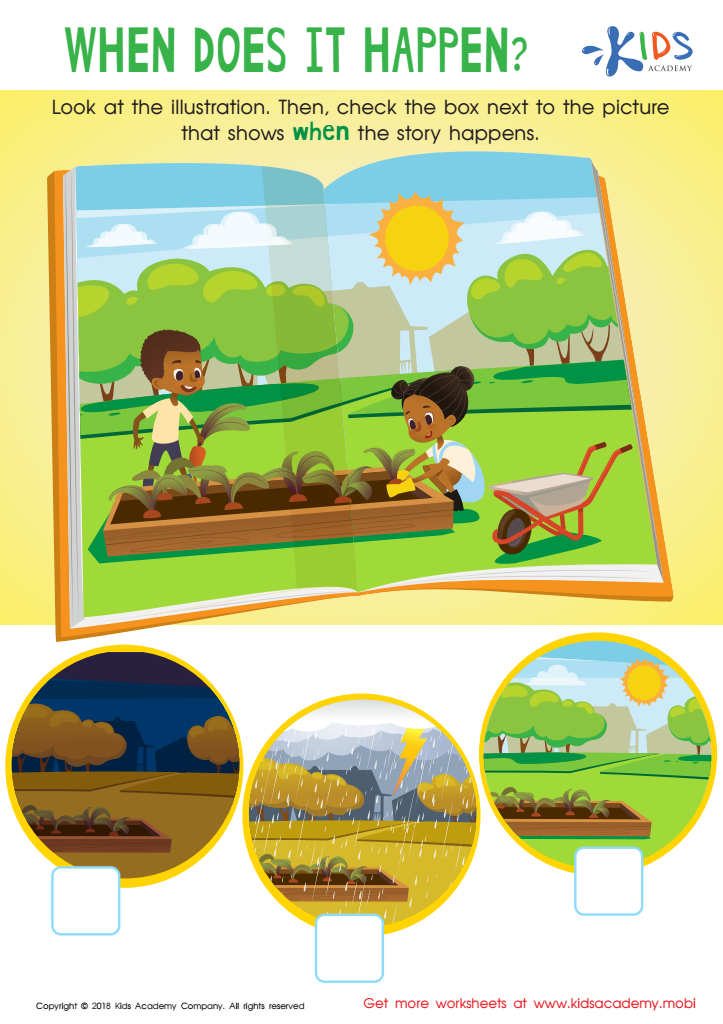

When Does It Happen? Worksheet
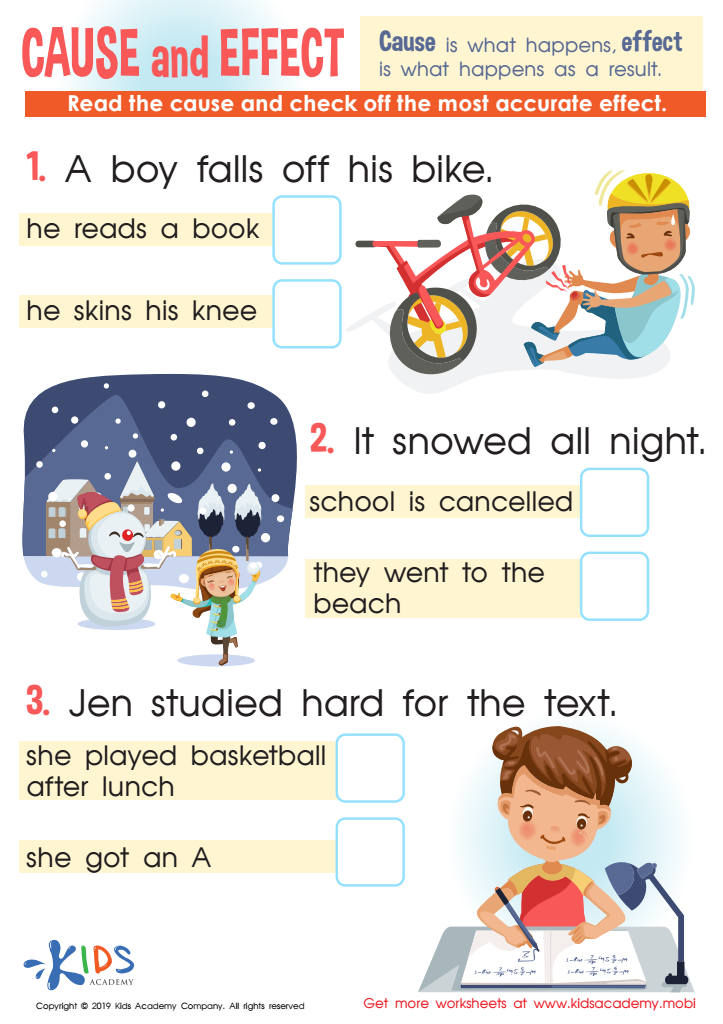

Cause And Effect Worksheet
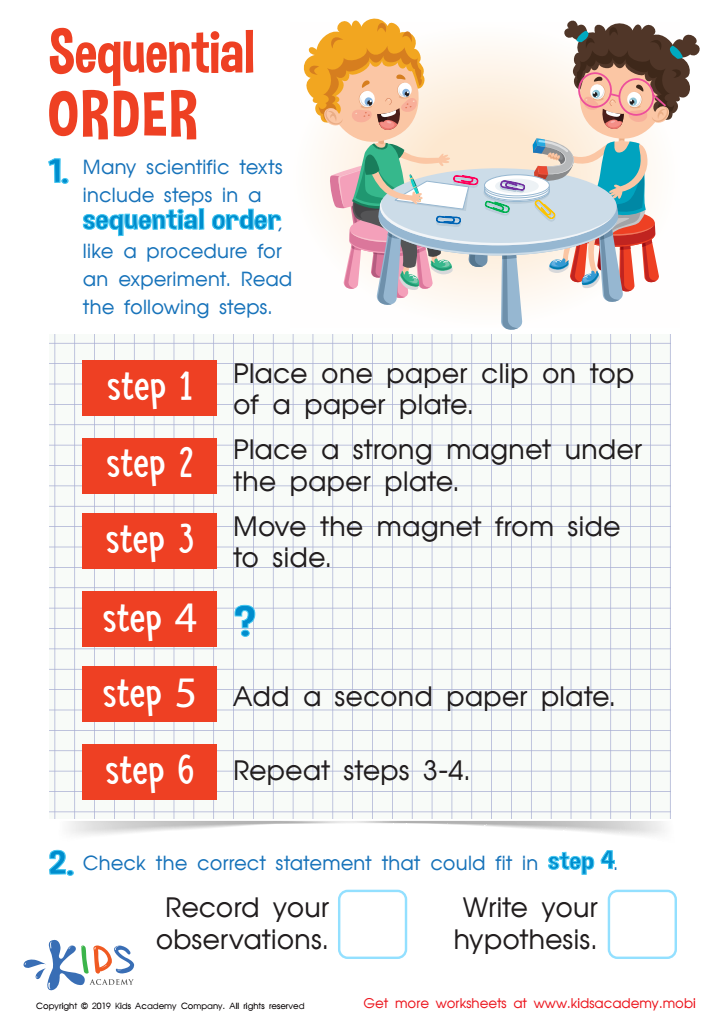

Sequencential Order Worksheet
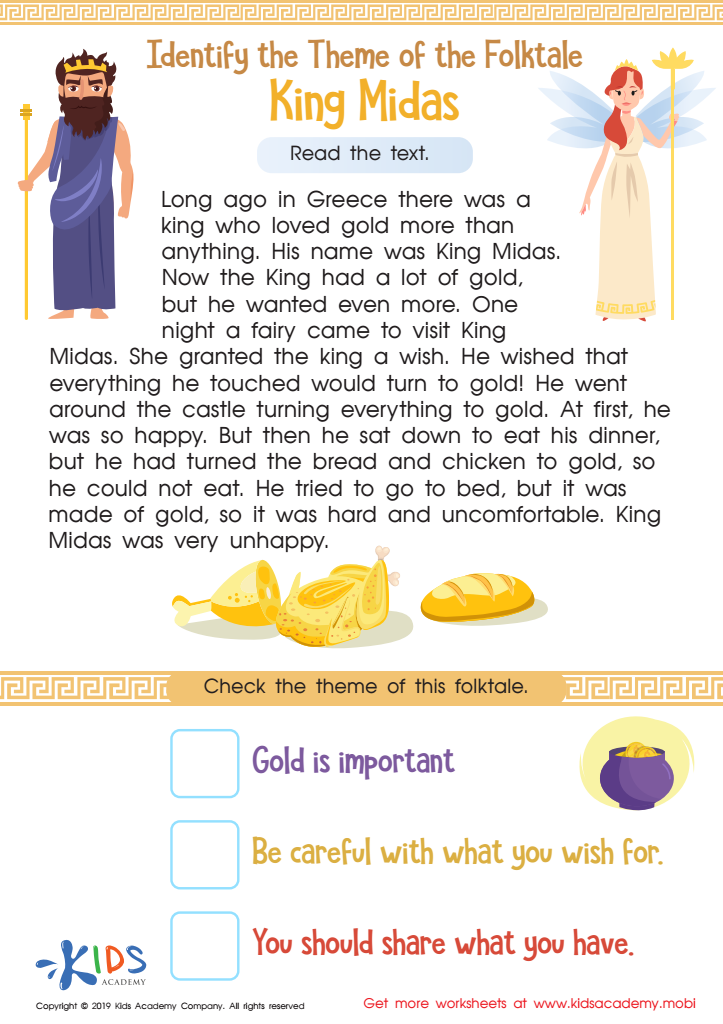

King Midas Worksheet
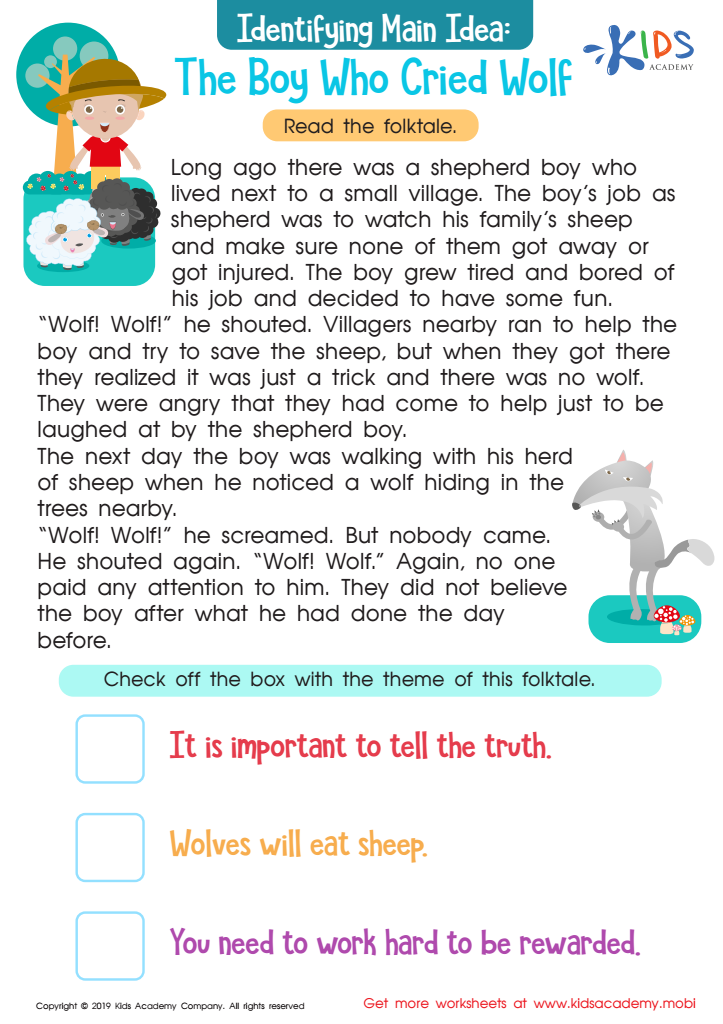

The Boy Who Cried Wolf Part 2 Worksheet
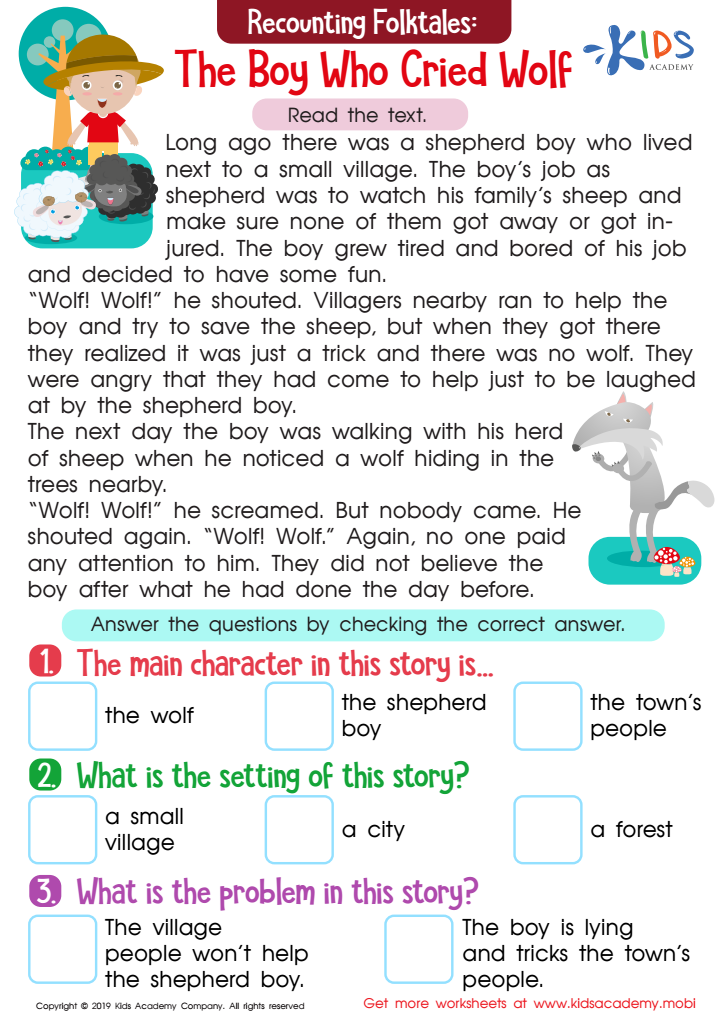

The Boy Who Cried Wolf Part 1 Worksheet
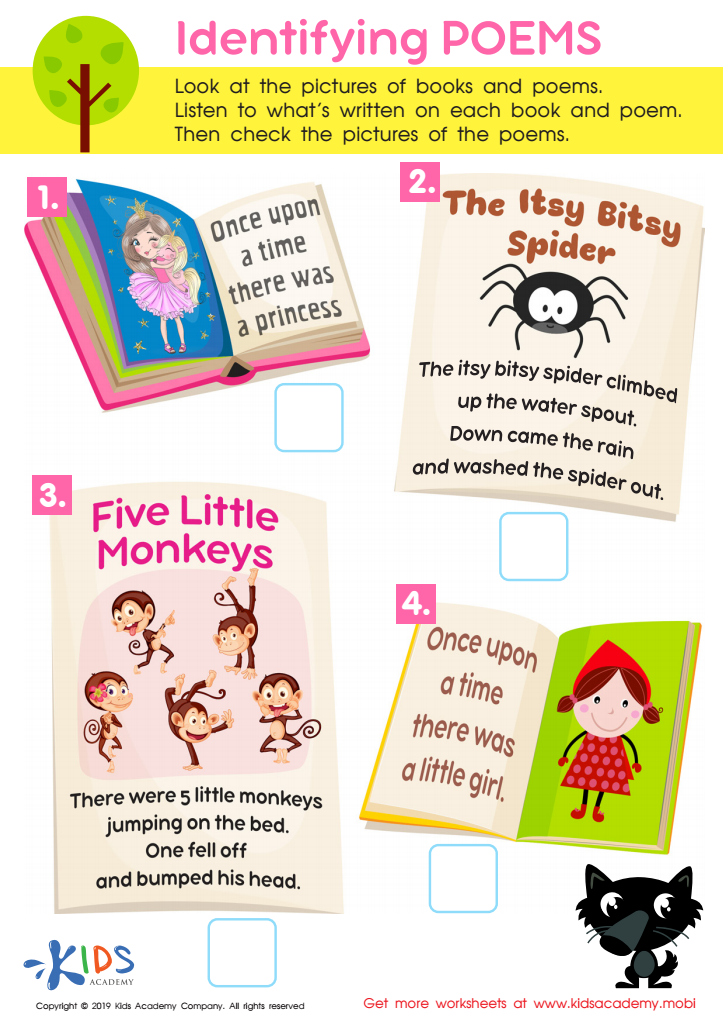

Identifying Poems Worksheet


Picture in Books Worksheet
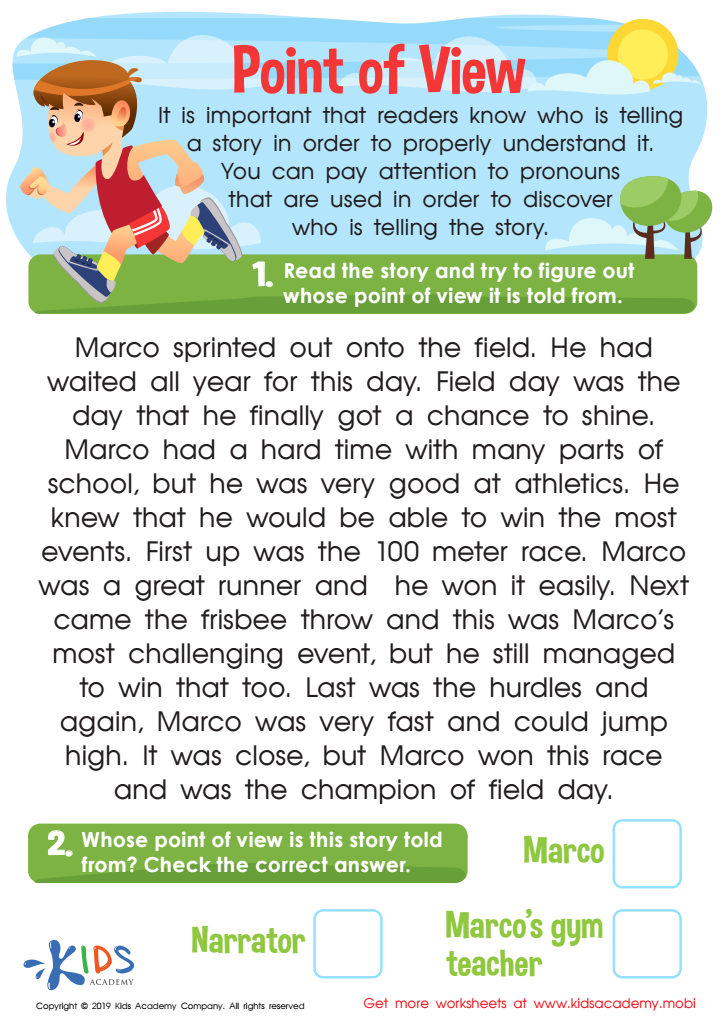

Point of View Worksheet
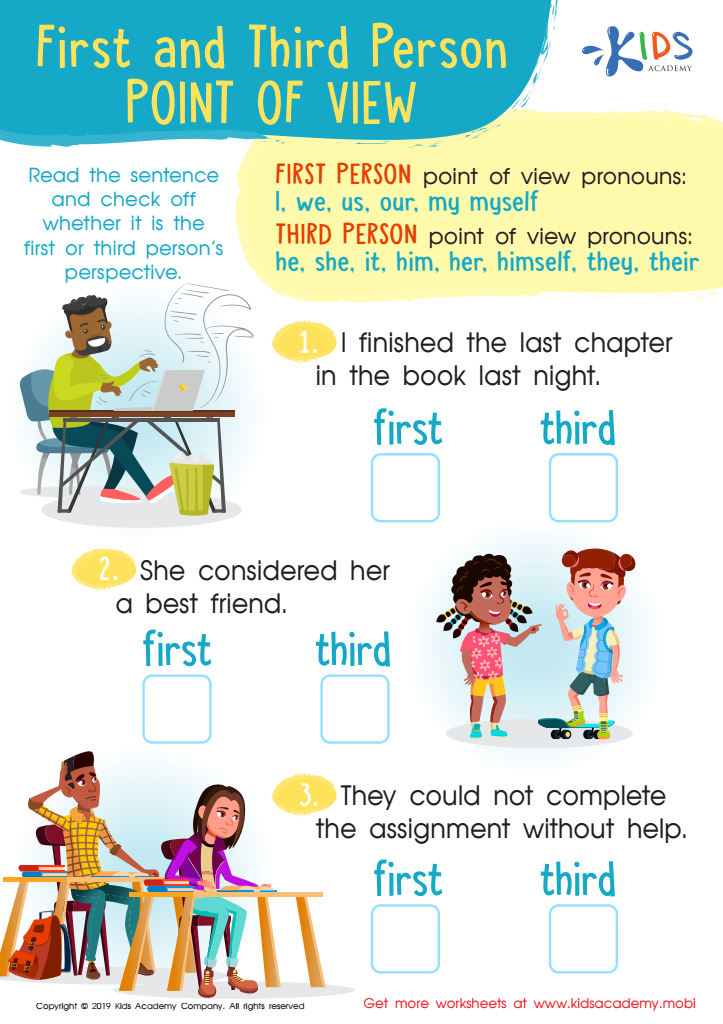

First and Third Person Point of View Worksheet


Finding Character Traits Worksheet
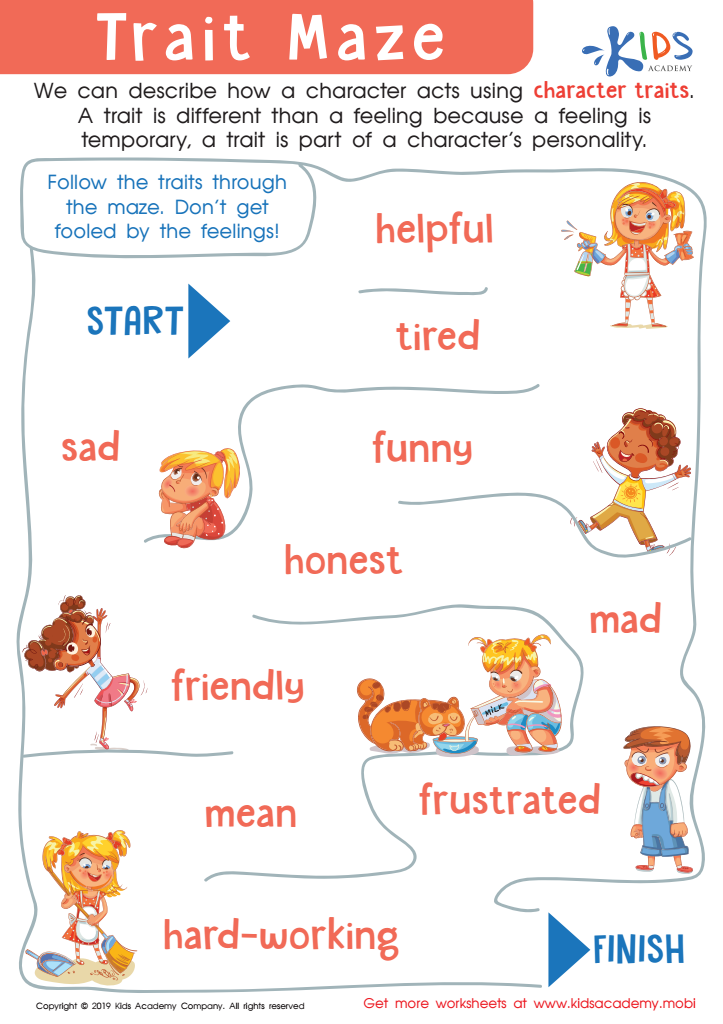

Trait Maze Worksheet
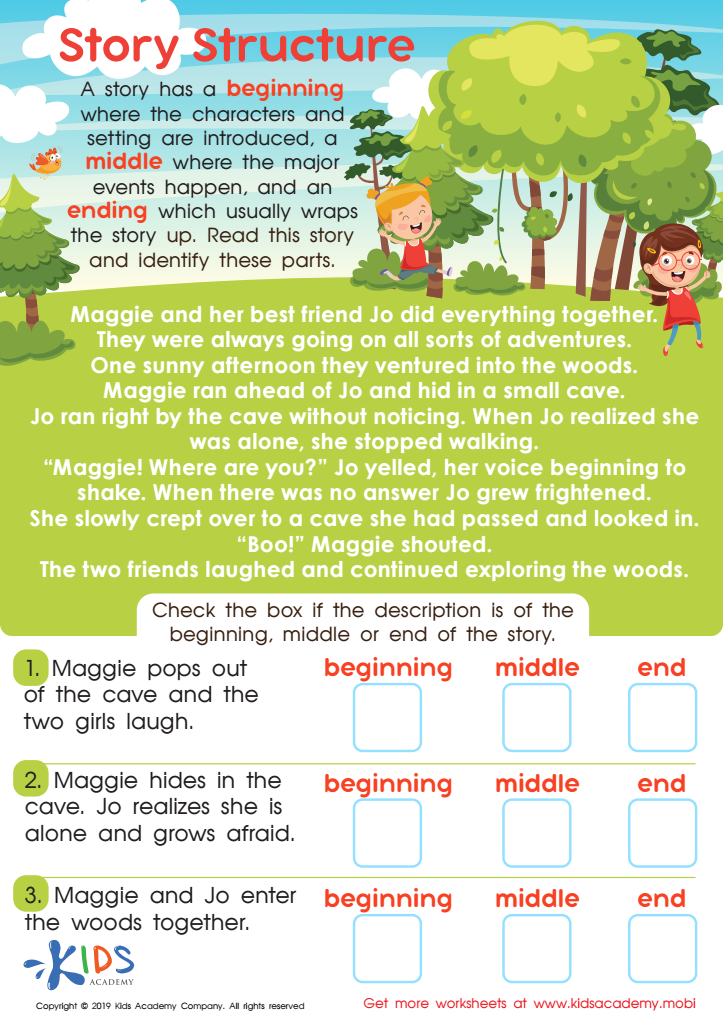

Story Structure Worksheet
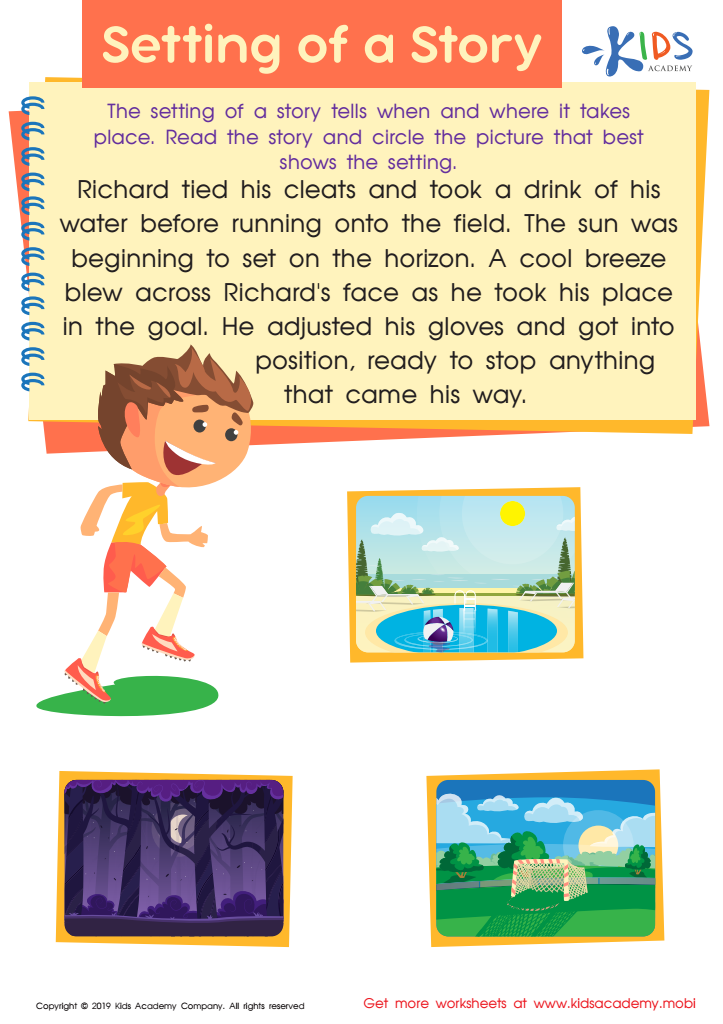

Setting of a Story Worksheet
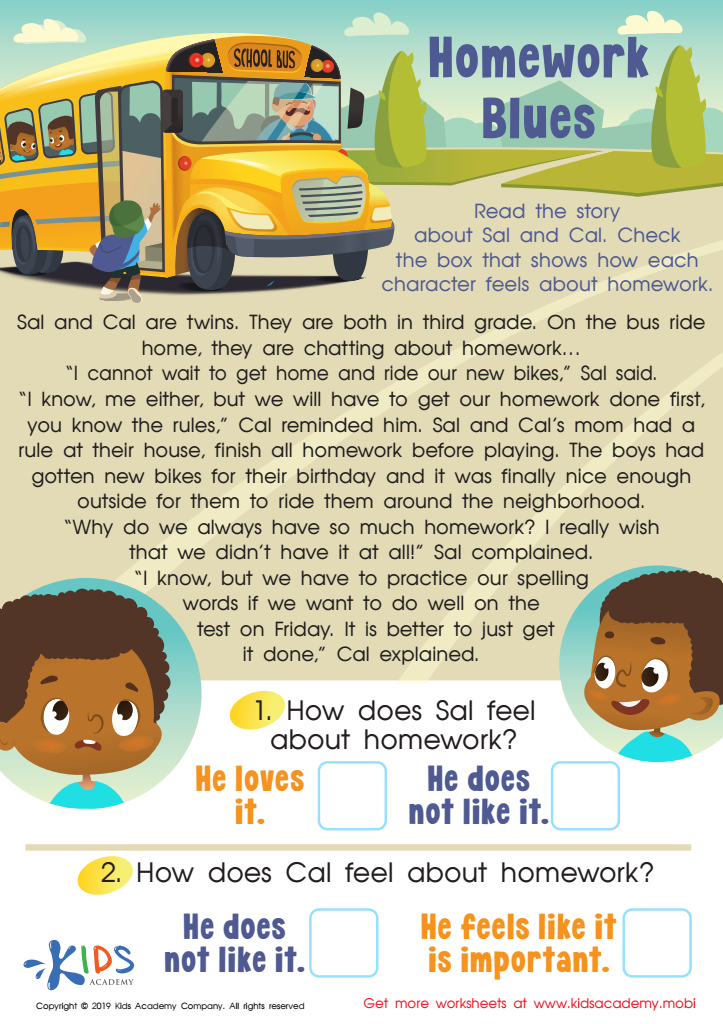

Homework Blues Worksheet
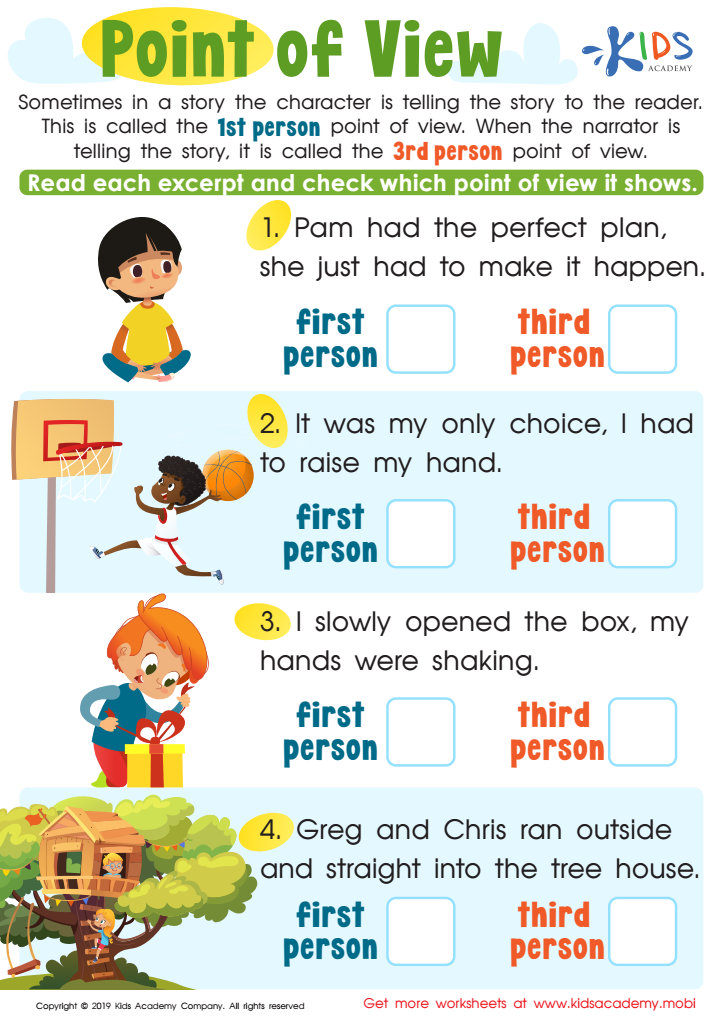

Point of View Printable
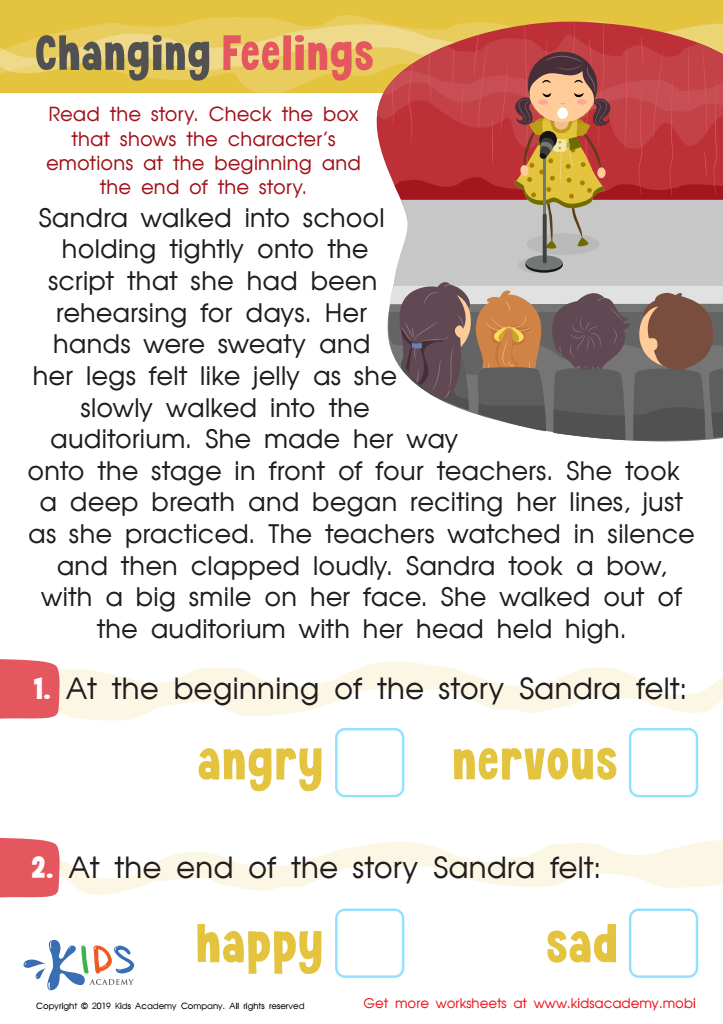

Changing Feelings Worksheet
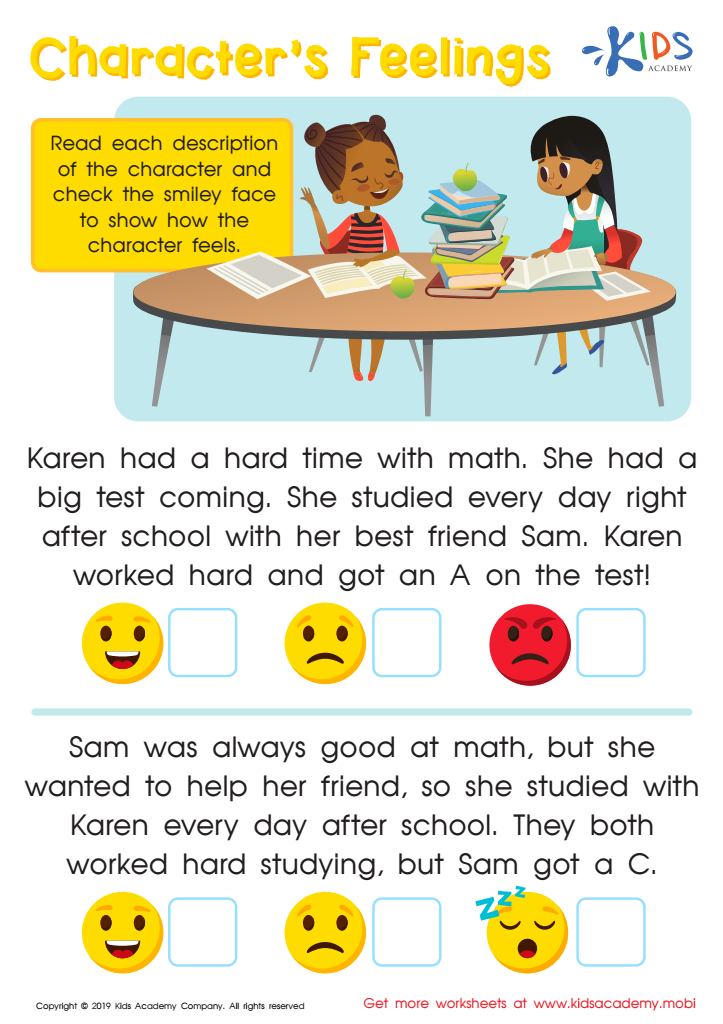

Character’s Feelings Worksheet
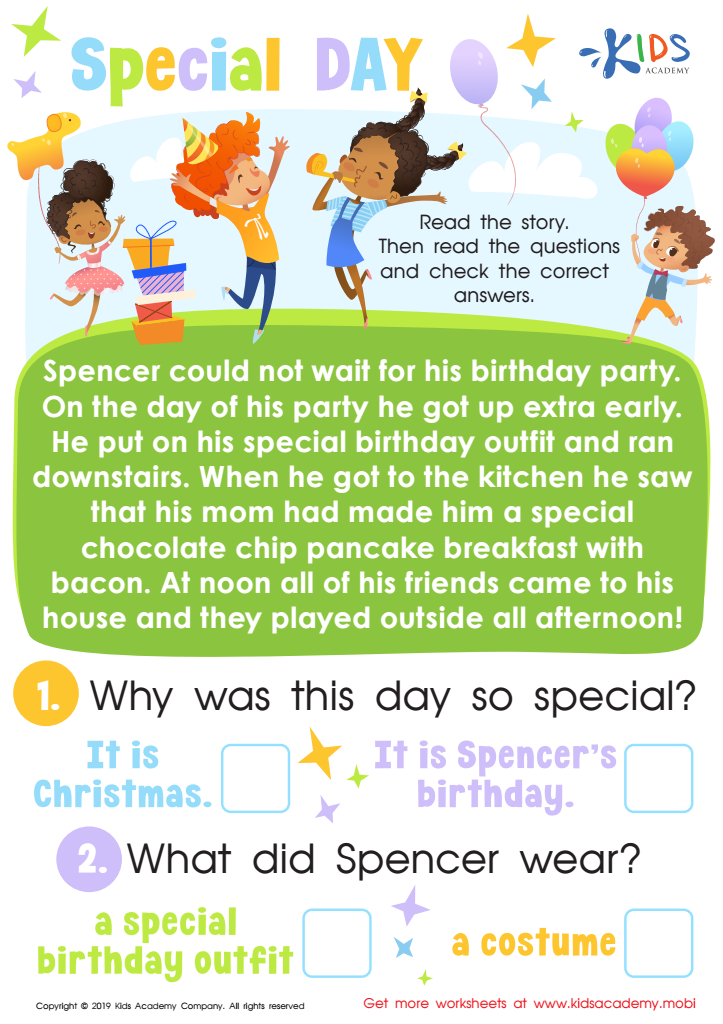

Special Day Worksheet
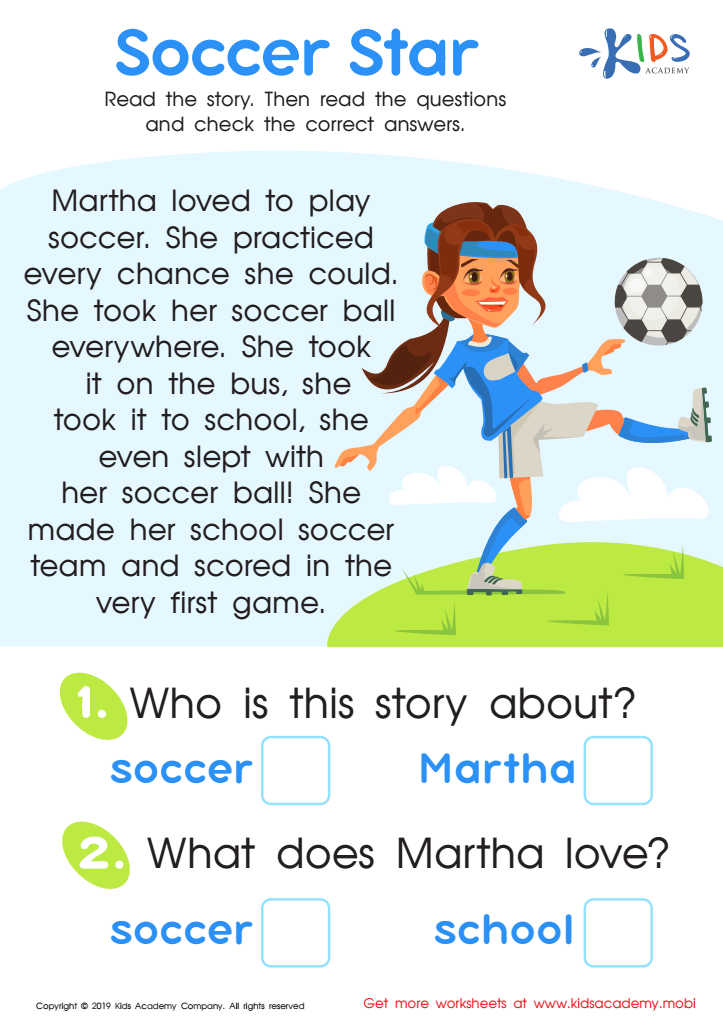

Soccer Star Worksheet
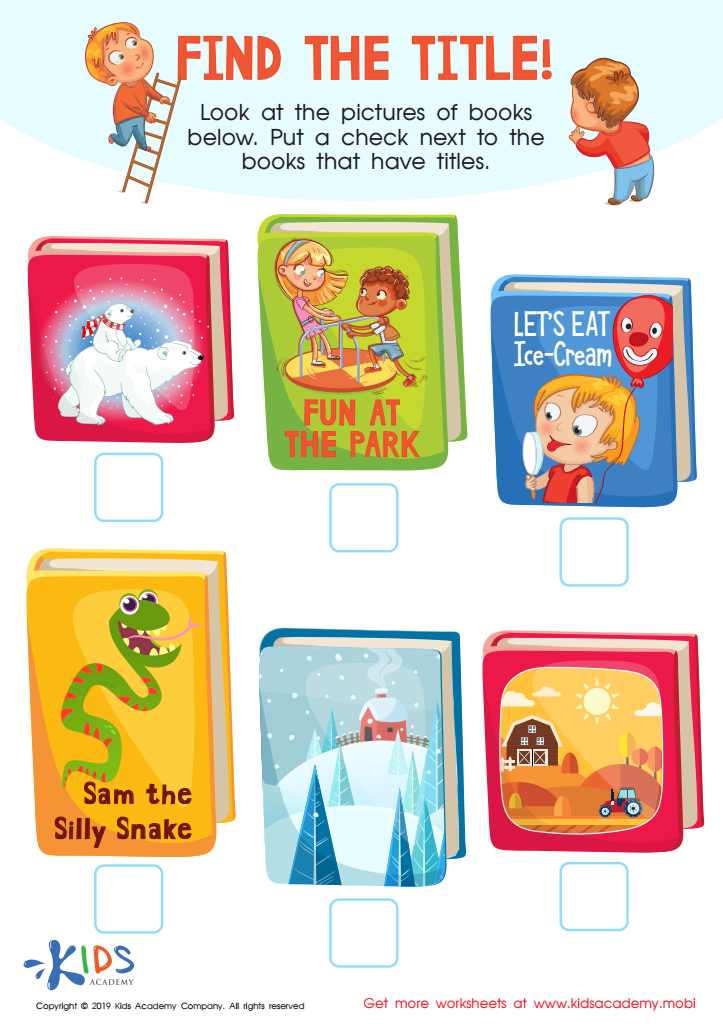

Find the Title Worksheet
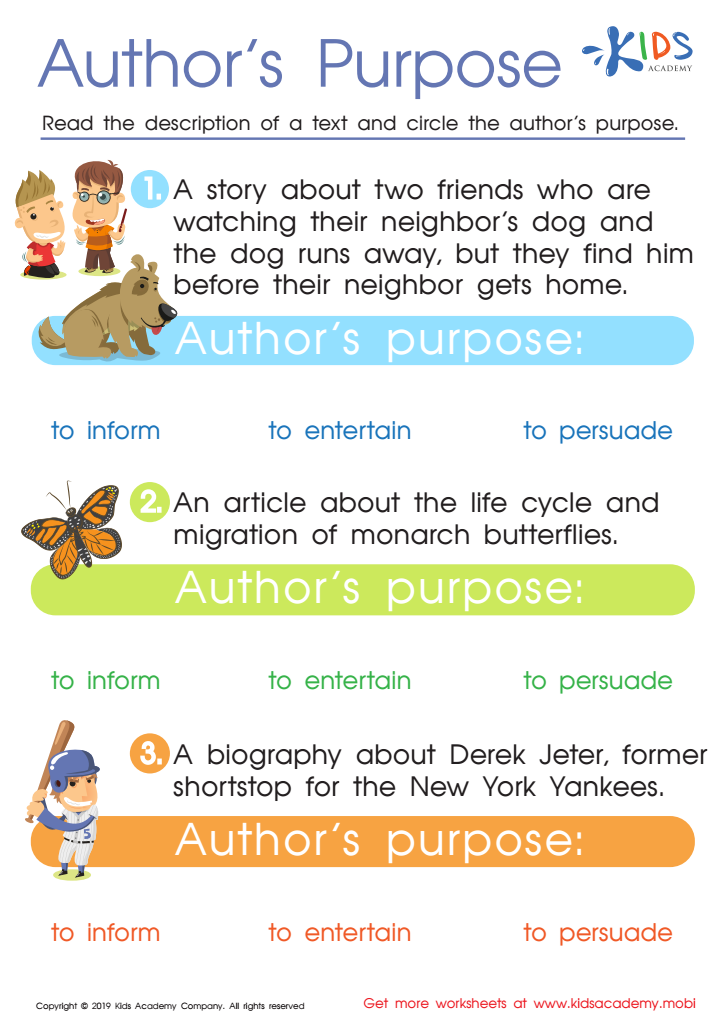

Author's Purpose Worksheet
Reading fiction to children ages 3-9 is essential for their cognitive and emotional development. This age range is a critical period for language acquisition. Engaging with stories introduces children to new vocabulary, sentence structures, and storytelling conventions, which enhances their linguistic skills and boosts comprehension.
Fiction nurtures imagination and creativity. As children delve into diverse worlds and characters, they learn to think abstractly and empathize with others' experiences. This emotional connection fostered by stories cultivates social skills and emotional intelligence, helping children navigate their own feelings and understand those of their peers.
Moreover, reading fiction supports critical thinking. Children question plot developments, predict outcomes, and analyze character motives, engaging their analytical skills. This lays a foundational understanding for complex concepts in later schooling.
Lastly, creating a habit of reading fosters a lifetime love for literature. Parents and teachers who prioritize reading fiction not only contribute to children's intellectual growth but also invite joy, adventure, and a love of stories into their everyday lives, creating shared bonding experiences. In summary, reading fiction is an invaluable practice that enriches children academically, socially, and emotionally during these formative years.

 Assign to My Students
Assign to My Students







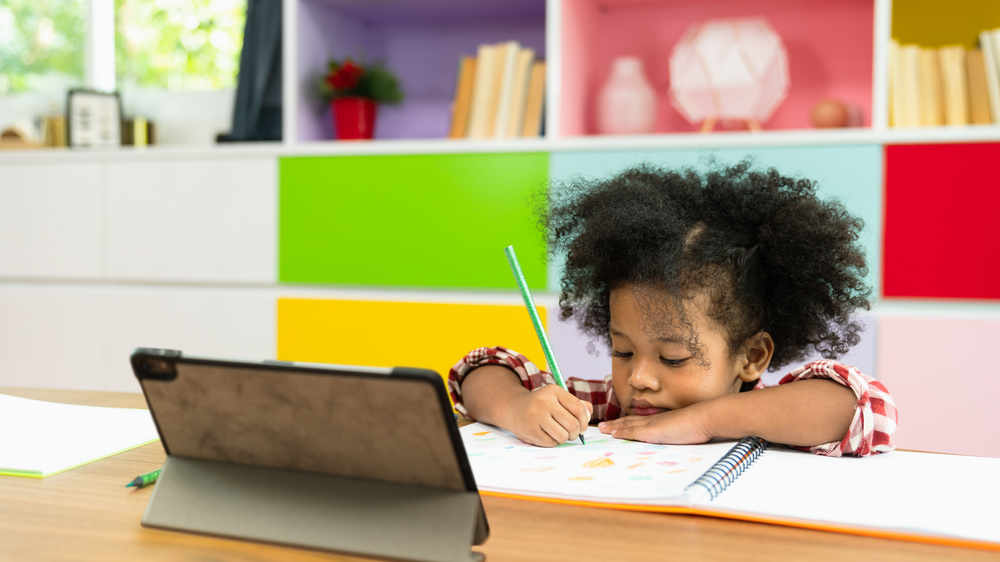
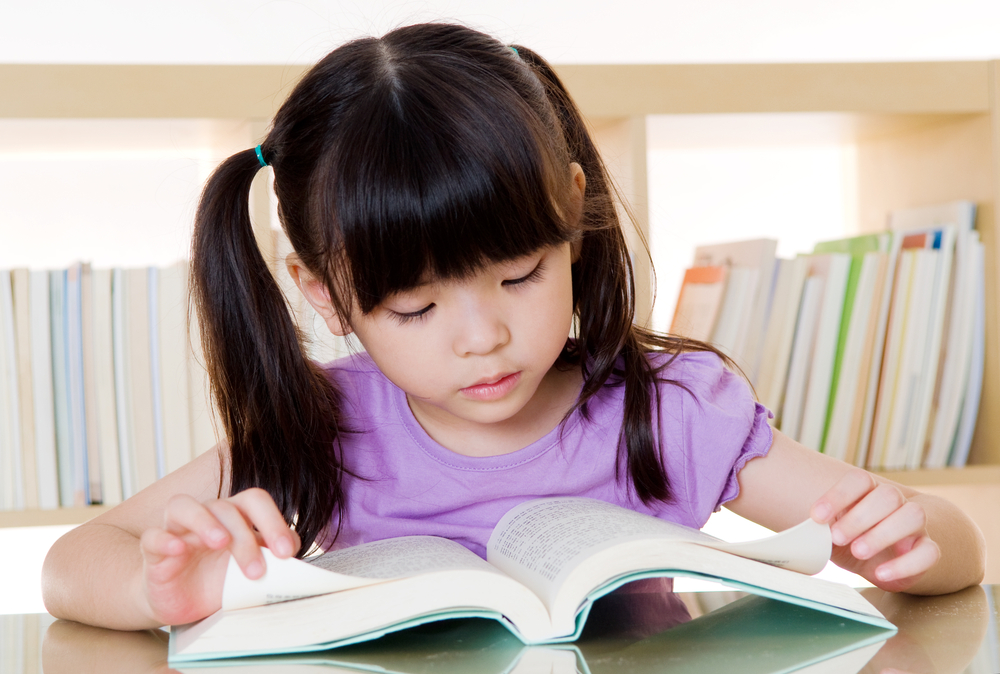
.jpg)
